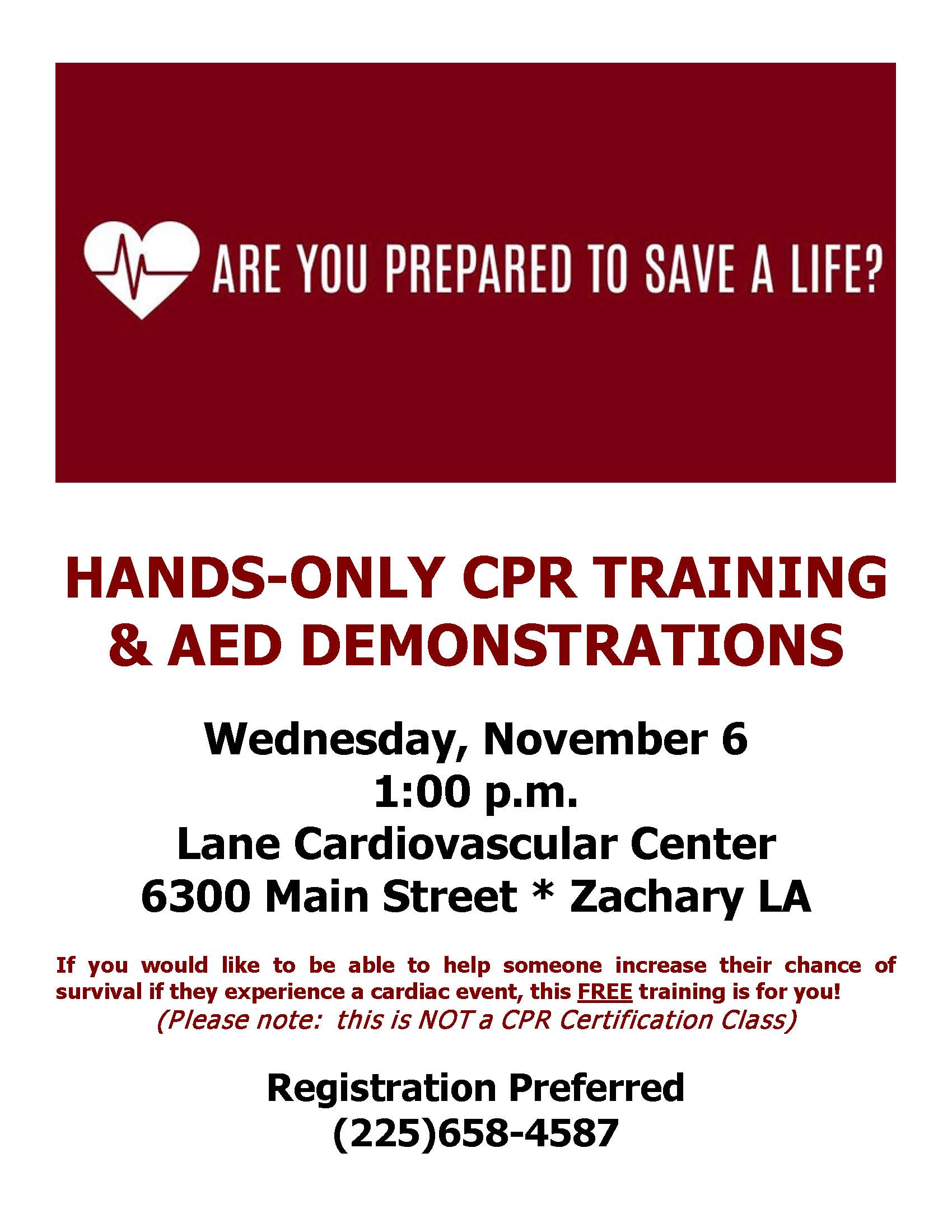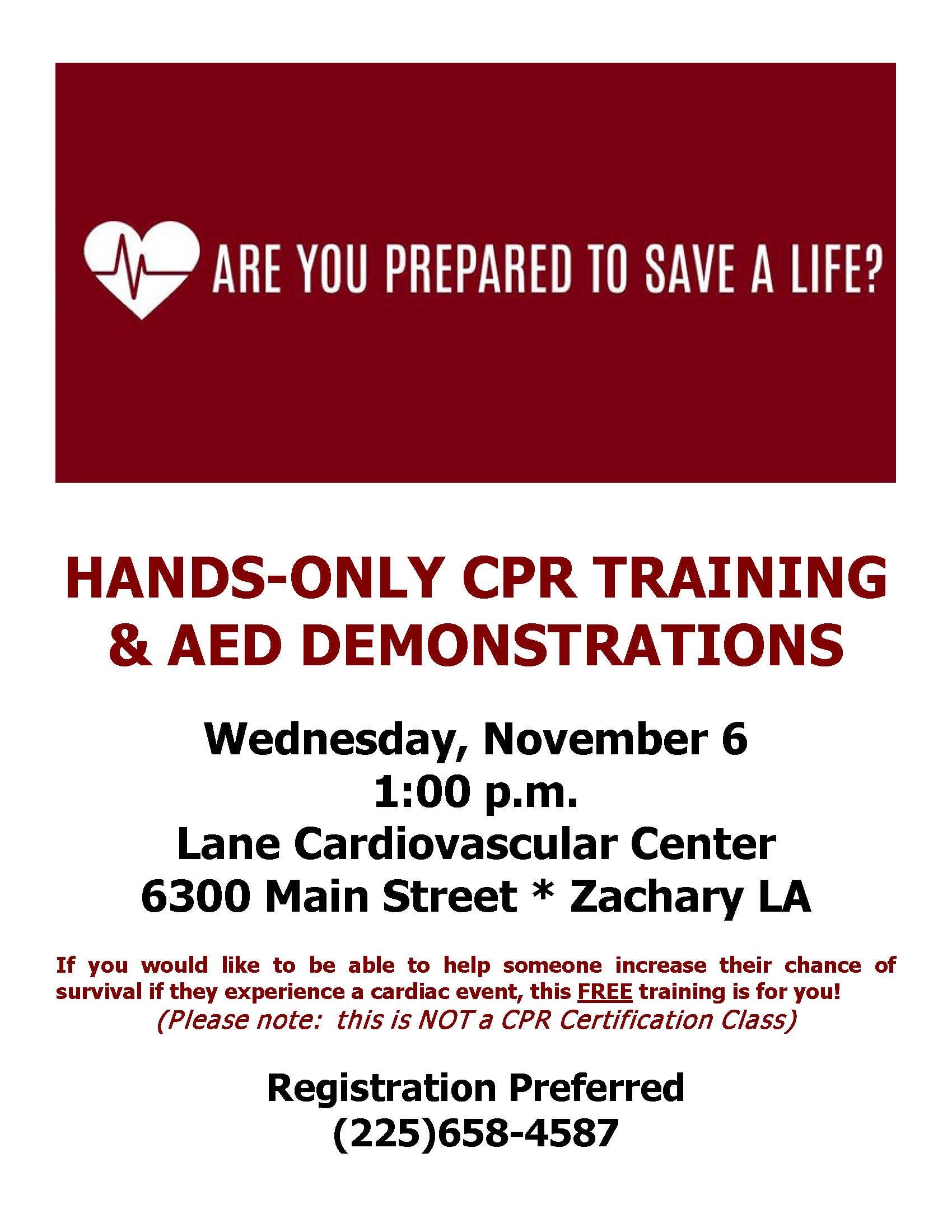Lane Regional Medical Center will provide FREE Hands-Only CPR training and AED demonstrations on Wednesday, November 6, 2021 at 1pm in the Lane Cardiovascular Center.
If you would like to be able to help someone increase their chance of survival if they experience a cardiac event, this training is for you! Registration is required and class size is limited. Call (225) 658-4587 to register. (Please note: this is NOT a CPR Certification Class)
What is Hands-Only CPR? Hands-Only CPR is CPR without rescue breaths - (chest compressions only).
Why would you use Hands-Only CPR? With 70 percent of all out-of-hospital cardiac arrests happening at home, if you’re called on to perform Hands-Only CPR, you’ll likely be trying to save the life of someone you know and love. Hands-Only CPR carried out by a bystander has been shown to be as effective as CPR with breaths in the first few minutes during an out-of-hospital sudden cardiac arrest for an adult victim.
Does learning Hands-Only CPR increase the chance of a bystander taking action in a cardiac emergency? Yes. Most Americans feel helpless to act during a cardiac emergency because they don’t know how to administer CPR or they’re afraid of hurting the victim.
What is an AED? An AED, or automated external defibrillator, is a sophisticated, yet easy-to-use, medical device that can analyze the heart's rhythm and, if necessary, deliver an electrical shock, or defibrillation, to help the heart re-establish an effective rhythm. The AED is a “smart device” and will only deliver a shock when it is needed.
Why learn to use an AED? AEDs are becoming increasingly more popular at public venues including airports, sports areas, malls, office complexes, and churches because of their importance. You may be the only person able to respond quickly. Defibrillation within three minutes of sudden cardiac arrest increases the chances of survival by 70 percent. AED use within one minute of collapse raises the survival rate to 90 percent.




.png?width=110&height=110&name=lane%20badge%20(1).png)
